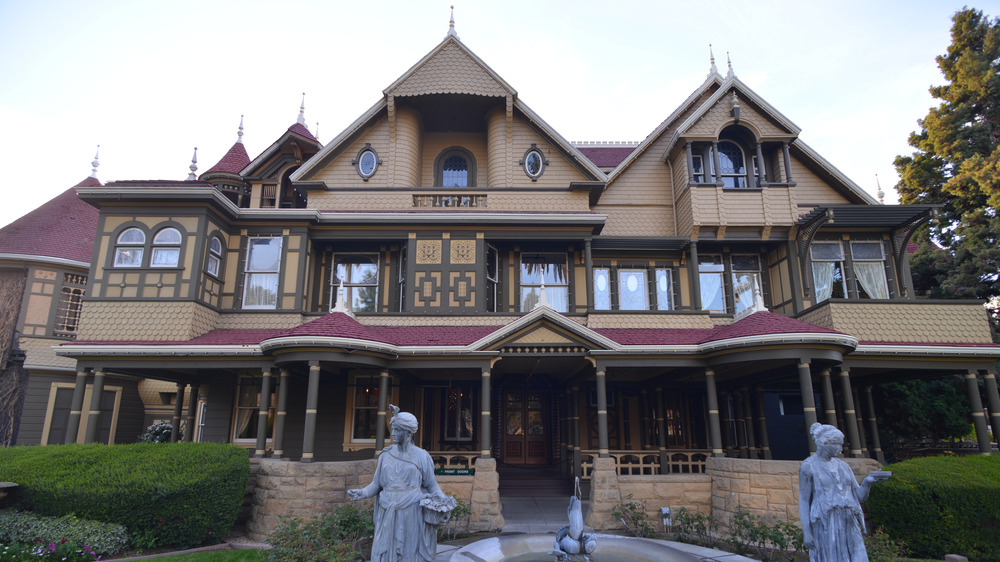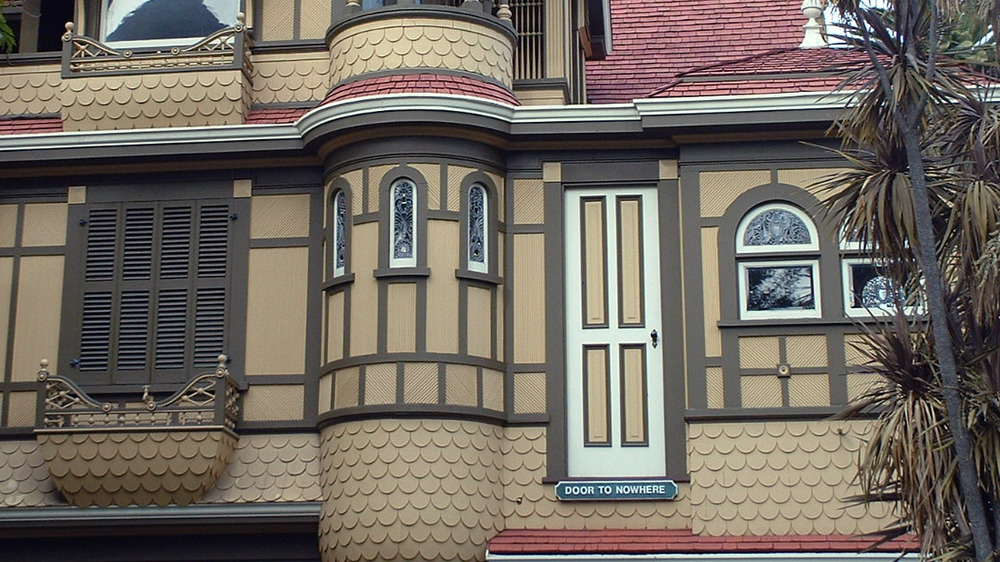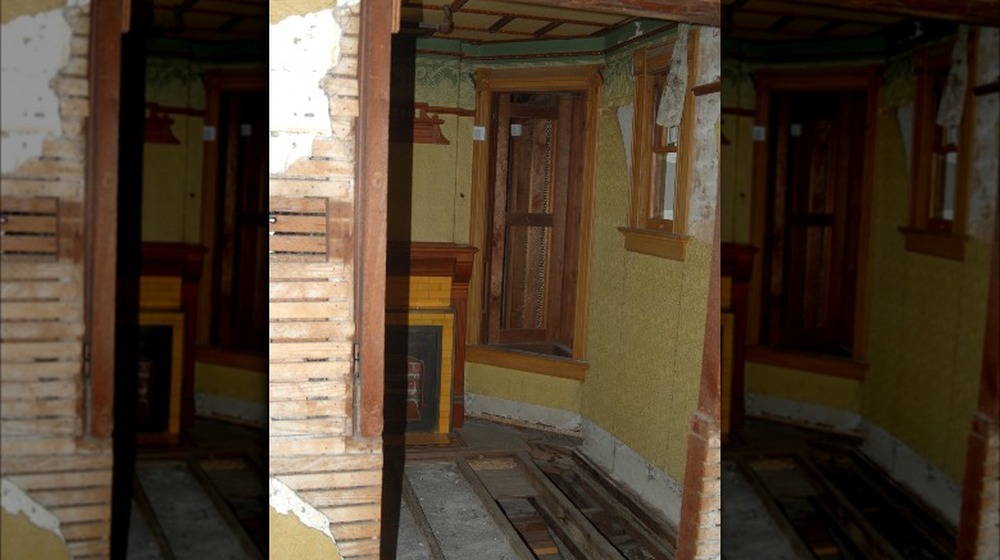What Some Believe The Symbols In The Winchester Mystery House Point To
When Sarah Winchester unexpectedly inherited the Winchester family fortune in 1881, her wealth came at the expense of not only her husband Will's life, but Will's father before him. Practically overnight, she became the heiress of the "gun that won the West" (as Biography calls it): the Winchester rifle. Favored by Texas Rangers, legendary trick-shot shooter Annie Oakley, renowned performer and hunter Buffalo Bill, and many more, sales of Winchester's various models of technologically-advanced rifles took off due to western expansion and settlement.
For her part, Sarah wasn't necessarily happy with an inheritance or legacy that had been built on the backs of such "blood money," as Smithsonian Magazine puts it. She was stricken with guilt, and moreover, terrified of being haunted by the deceased who'd been slain by the family's products. Sarah had a keen interest in the "spiritism" movement that engulfed the West in the second half of the 1800s, both in the U.S. and in Victorian England. When she moved into her quaint, eight-room cottage in San Jose, California, in 1886, she quickly set to work converting it into a monstrous, 200-room labyrinth to confound vengeful spirits, later dubbed the "Winchester Mystery House." Staircases that lead to ceilings, doors that lead to 12-foot drops, windows in floors, rooms within rooms so convoluted that Sarah lost track of it all — all so the ghosts of the dead couldn't track her down.
A hidden code within a labyrinthine mansion that points to deeper secrets
As Mental Floss relates, The Winchester Mystery House's 24,000-square feet contain "950 doors, 10,000 windows, 40 stairways, 52 skylights, 47 fireplaces, six kitchens, plus a trio of elevators," and this is after the San Francisco Earthquake of 1906 took down its fifth, sixth, and seventh floors, per CNN. Sarah's obsessions — and her $1,000 per day fortune (about $31,000 in today's money) — branded the number 13 everywhere: the number of panes in windows, the number of steps in stairways, the number of panels in ceilings, even the number of times Sarah signed her will. She held séances every night to consult the dead regarding construction, and relentlessly built, rebuilt, remodeled, demolished, and renovated "with shifts of 16 carpenters who were paid three times the going rate and worked 24 hours a day, every day" to transform her house into a single emblem of mystical symbolism.
Is it any wonder why the still-extant manor, now a tourist site, is referred to as a "mystery" house? Many folks insist it must hide some secret code beyond the obvious oddities of its 38-year-long construction. What of the upside-down pillars? The cupboards sunk partway in the floor? The spiderweb motifs? (The last were actually good luck symbols of the era.) As the Winchester Mystery House website (and its coy marketers) says, Sarah's inauguration into an elite family may have introduced her to a "secret society of handshakes, symbols and rituals."
Connections to Freemasons, the Knights Templar, Rosicrucians, and Francis Bacon
The Truth about the Winchester House website concocts an explanation for Sarah Winchester's house as convoluted, hodgepodged, and ad hoc as the house's architecture itself. Rosicrucians, Freemasons, Kabbalah, the Fibonacci Sequence, Francis Bacon, William Shakespeare, M.C. Escher, Lewis Carroll, mathematician Georg Bernhard Riemann's investigations into a four-dimensional reality predating Einstein's Theory of General Relativity and, now, quantum mechanics: yes, Sarah Winchester, who "made extensive use of the encryption techniques devised by [John] Dee and Bacon," was "clearly a misunderstood genius far ahead of her time" whose "treasure trail includes her incredible architectural allusions to a world in which higher spatial dimensions rule." Her séance room was a "Rosicrucian Sanctum" of meditation near the center of the house, and all the spiritualist stuff was a cover story for her dealings with secret societies.
Other sites, such as Ripley's, cite the house's iron gates and switchback staircases as displaying Masonic symbols of "the guiding path of self-initiation," while the Winchester Mystery House website points out how Sarah "likely would have visited" Chartres Cathedral south of Paris while traveling in France, a building notably financed by the infamous Knights Templar.
If you're keen on joining the mystery, and becoming one of the house's thousands of tourists per year, head to the Winchester Mystery House website and snag a ticket. Or drop $9 for an all-access, 360-degree virtual tour package that might just have you seeking answers six degrees of Francis Bacon.


